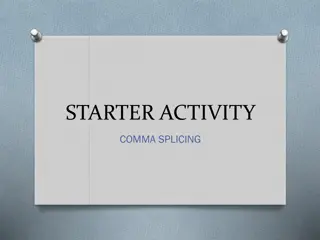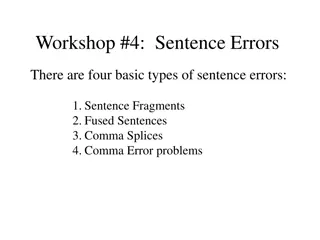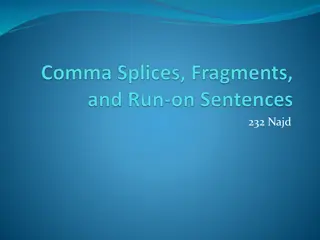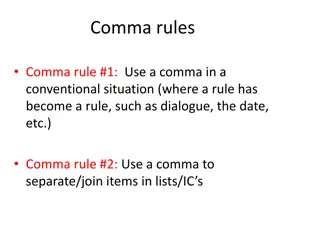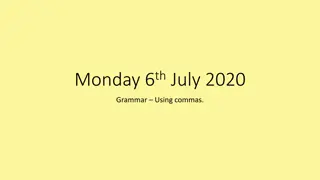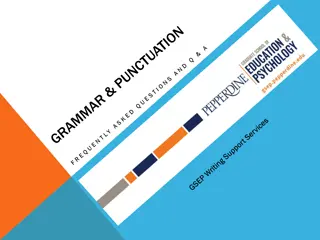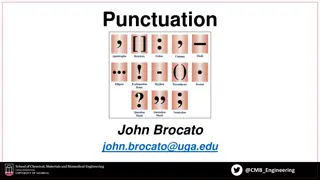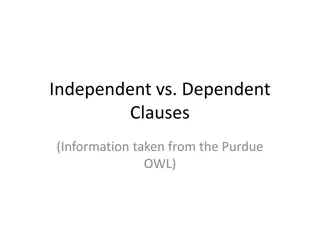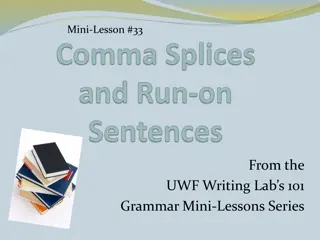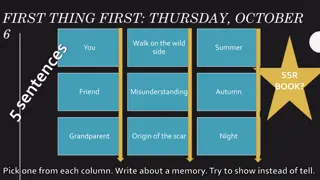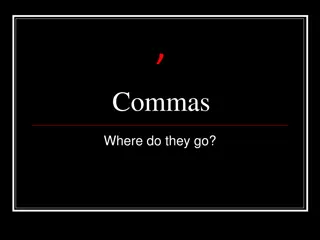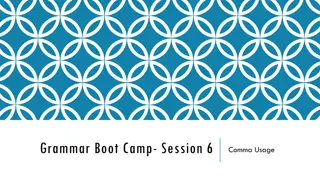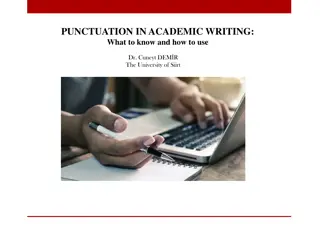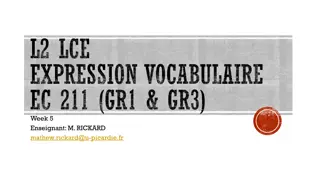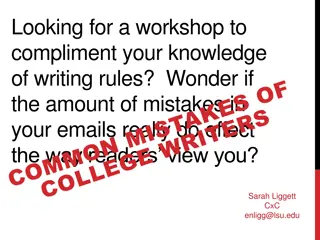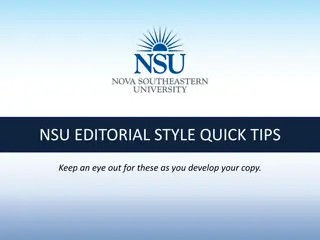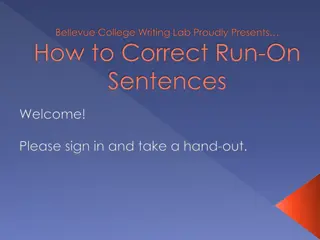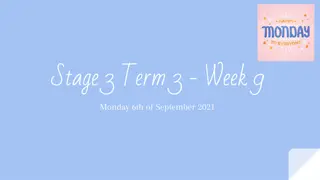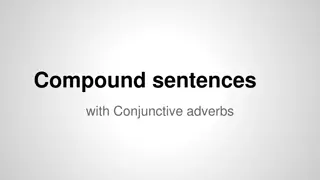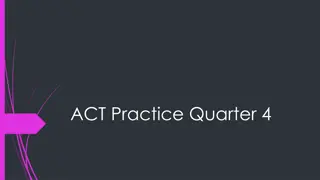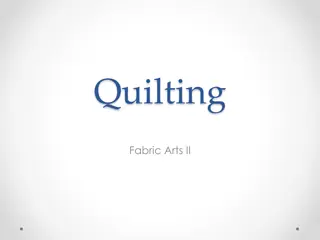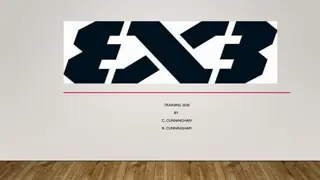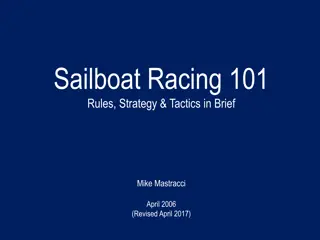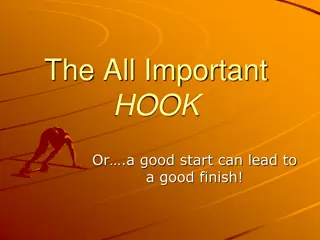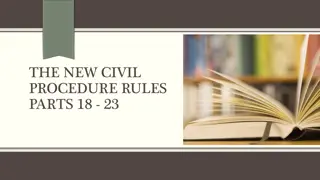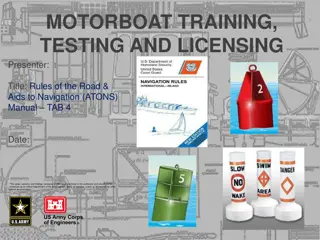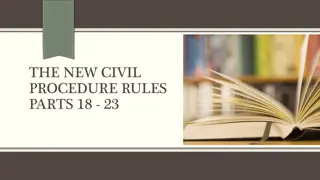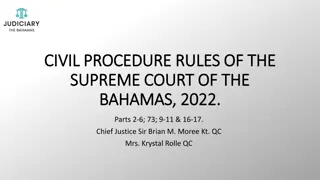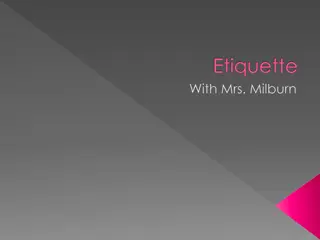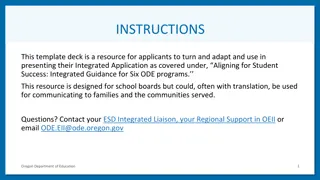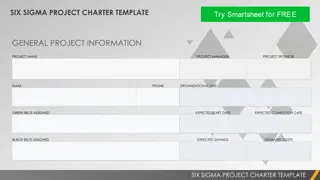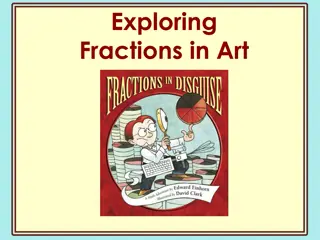Mastering the Art of Comma Usage: The Six Basic Rules
Learn and master the six basic comma rules to enhance your English writing skills. Discover how to use commas effectively in lists, before coordinating conjunctions, after introductory words, around interrupting words or phrases, with concluding words or phrases, and when setting off quoted language. Improve your punctuation proficiency with practical examples provided for each rule.
Uploaded on Sep 10, 2024 | 3 Views
Download Presentation

Please find below an Image/Link to download the presentation.
The content on the website is provided AS IS for your information and personal use only. It may not be sold, licensed, or shared on other websites without obtaining consent from the author. Download presentation by click this link. If you encounter any issues during the download, it is possible that the publisher has removed the file from their server.
E N D
Presentation Transcript
The SIX Basic Comma Rules Thanks to a great book: The LEAST You Should Know about English
Comma Rule #1 The Serial Comma, not Killer Place a comma between items in a series as in the example below. I have my laptop, my pens, my pencils, and my MP3 Player in my backpack.
Comma Rule #2 The Coordinating Conjunction Comma... Place a comma before a coordinating conjunction that joins two independent clauses. The coordinating conjunctions are: and, but, for, nor, or, so, and yet. For Example: The best place to take a vacation is Chicago, but the best place to take a honeymoon is Hawaii.
Comma Rule #3 The Introductory Word or Phrase comma Always place a comma after an introductory word or phrase. See below. John, what are you doing to my car? OR As I walked down the street, I ran into a friend I hadn t seen in years.
Comma Rule #4 The Interrupting Word/Phrase Comma Always place a comma before and after any word or phrase that can be removed from the sentence and still make sense. For Example: John, the teacher, wrote his name on the board. OR I ran down the street, though I didn t have to, and fell down and hurt my crown.
Comma Rule #5 The Concluding Word/Phrase Comma Always place a comma before any word or phrase that is just tagged on at the end of the sentence. See below. Is that you in the corner, John? OR I hadn t seen John in years, though that didn t make much difference in our friendship.
Comma Rule #6 Use a comma to set off quoted language. Frost s poem Fire and Ice begins with the lines, Some say the world will end in fire, / Some say in ice. Fire when ready, Gridley, the Admiral said. We can t see into the future, said the President, but we have to prepare for it nonetheless.
Attributions This work is licensed under a Creative Commons Attribution 4.0 International License. To view a copy of this license, visit Creative Commons. This workforce solution was funded by a grant awarded by the U.S. Department of Labor s Employment and Training Administration. The solution was created by the grantee and does not necessarily reflect the official position of the U.S. Department of Labor. The Department of Labor makes no guarantees, warranties, or assurances of any kind, express or implied, with respect to such information, including any information on linked sites and including, but not limited to, accuracy of the information or its completeness, timeliness, usefulness, adequacy, continued availability, or ownership.


